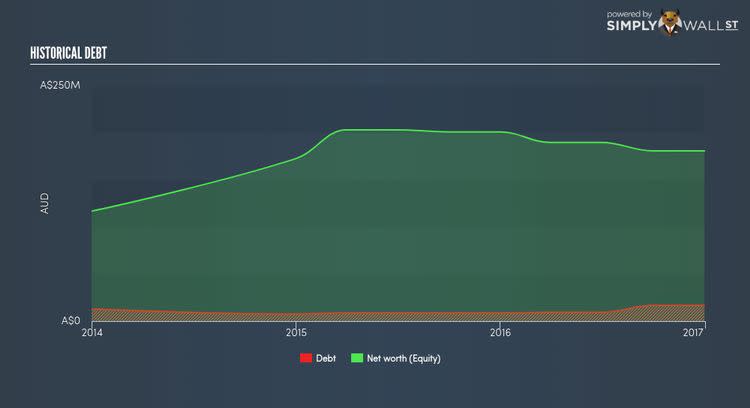Is Premiere Eastern Energy Limited’s (ASX:PEZ) Balance Sheet A Threat To Its Future?

Premiere Eastern Energy Limited (ASX:PEZ) is a small-cap stock with a market capitalization of AUD A$15.60M. While investors primarily focus on the growth potential and competitive landscape of the small-cap companies, they end up ignoring a key aspect, which could be the biggest threat to its existence: its financial health. There are always disruptions which destabilize an existing industry, in which most small-cap companies are the first casualties. Here are few basic financial health checks to judge whether a company fits the bill or there is an additional risk which you should consider before taking the plunge. See our latest analysis for PEZ
How does PEZ’s operating cash flow stack up against its debt?
While failure to manage cash has been one of the major reasons behind the demise of a lot of small businesses, mismanagement comes into the light during tough situations such as an economic recession. Furthermore, failure to service debt can hurt its reputation, making funding expensive in the future. Fortunately, we can test the company’s capacity to pay back its debtholders without summoning any catastrophes by looking at how much cash it generates from its current operations. PEZ’s recent operating cash flow was -2.35 times its debt within the past year. This means what PEZ can generate on an annual basis, which is currently a negative value, does not cover what it actually owes its debtors in the near term. This raises a red flag, looking at PEZ’s operations at this point in time.
Can PEZ meet its short-term obligations with the cash in hand?
What about its commitments to other stakeholders such as payments to suppliers and employees? As cash flow from operation is hindered by adverse events, PEZ may need to liquidate its short-term assets to meet these upcoming payments. We test for PEZ’s ability to meet these needs by comparing its cash and short-term investments with current liabilities. Our analysis shows that PEZ does have enough liquid assets on hand to meet its upcoming liabilities, which lowers our concerns should adverse events arise.
Does PEZ face the risk of succumbing to its debt-load?
While ideally the debt-to equity ratio of a financially healthy company should be less than 40%, several factors such as industry life-cycle and economic conditions can result in a company raising a significant amount of debt. In the case of PEZ, the debt-to-equity ratio is 9.20%, which indicates that the company faces low risk associated with debt. No matter how high the company’s debt, if it can easily cover the interest payments, it’s considered to be efficient with its use of excess leverage. A company generating earnings at least three times its interest payments is considered financially sound. PEZ’s profits amply covers interest at 238.25 times, which is seen as relatively safe. Debtors may be willing to loan the company more money, giving PEZ ample headroom to grow its debt facilities.
Next Steps:
Are you a shareholder? Although PEZ’s debt level is relatively low, its cash flow levels still could not copiously cover its borrowings. This may indicate room for improvement in terms of its operating efficiency. Though, the company will be able to pay all of its upcoming liabilities from its current short-term assets. Given that its financial position may be different. You should always be keeping abreast of market expectations for PEZ’s future growth on our free analysis platform.
Are you a potential investor? PEZ’s low-debt position gives it headroom for future growth funding in the future. In addition, its high liquidity means the company should continue to operate smoothly in the case of adverse events. In order to build your confidence in the stock, you need to also examine PEZ’s track record. I encourage you to continue your research by taking a look at PEZ’s past performance analysis on our free platform to conclude on PEZ’s financial health.
To help readers see pass the short term volatility of the financial market, we aim to bring you a long-term focused research analysis purely driven by fundamental data. Note that our analysis does not factor in the latest price sensitive company announcements.
The author is an independent contributor and at the time of publication had no position in the stocks mentioned.

